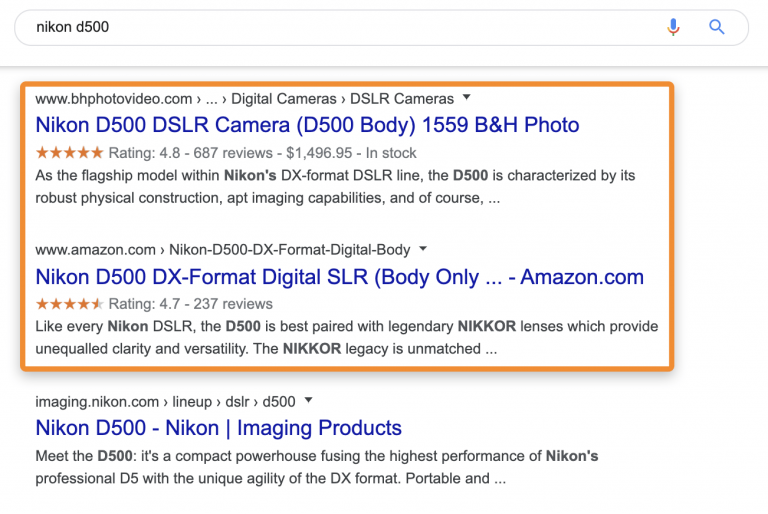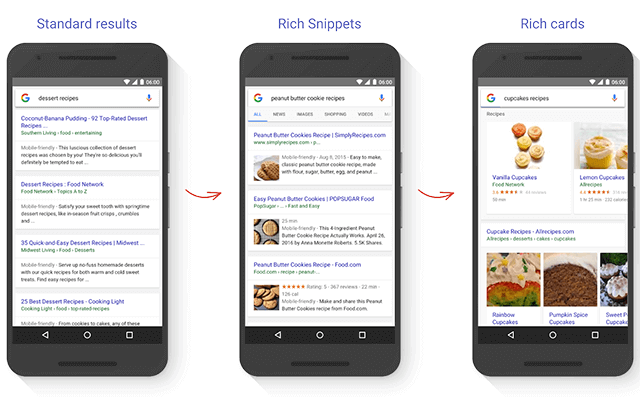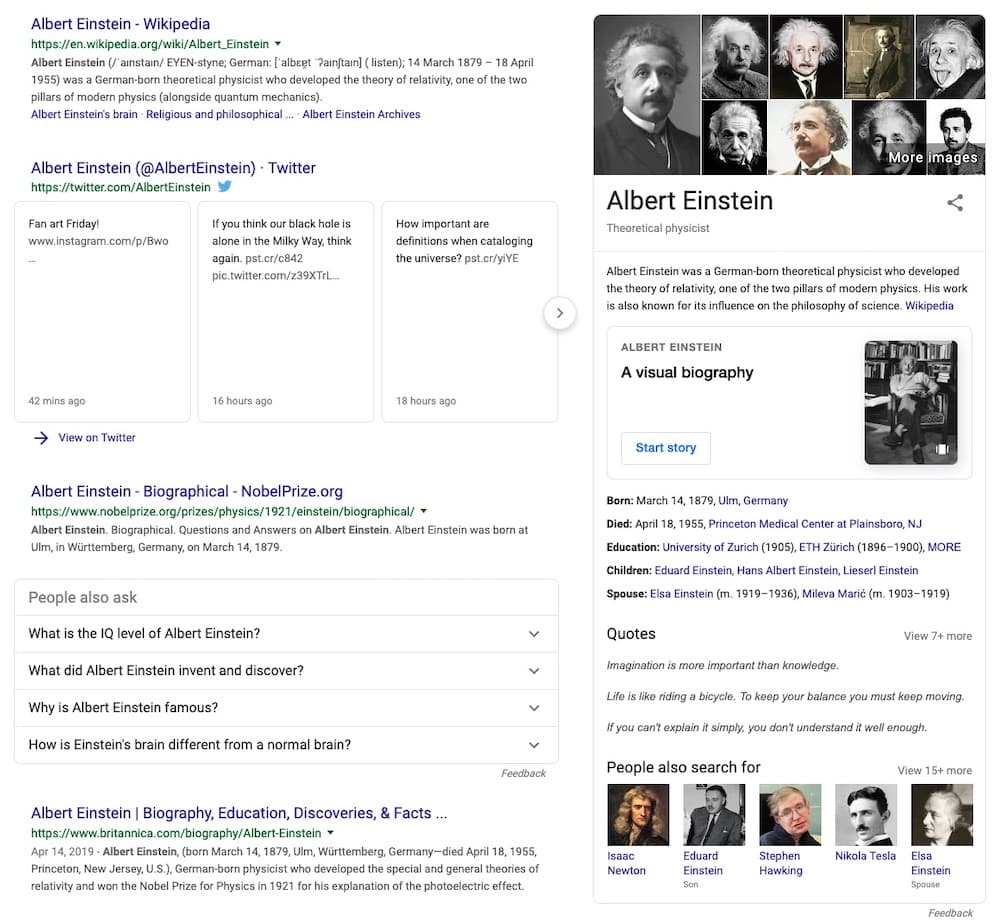The most effective way to stand out in the search results is to get featured in rich snippets with structured data markup. This post will serve as a guide on structured data, its meaning, and ways of implementing it to improve visibility and ranking on Google search results.
Page Contents:
What is Structured Data?
Structured Data enables search engines to better understand what the page content, product, and website are all about. Structured data is used for rich snippets, rich cards, AMPs, knowledge graphs, etc. Though it’s not a direct ranking parameter and does not help in ranking higher in SERPs, has major other benefits.
For example, if you have a food channel on YouTube, and you add structured data into the code, the results in the SERPs will become more appealing and rich than the generalized ones. Using structured data adds more details to your snippet on the search results page.
Similarly, if you have an eCommerce site, you can provide additional details in the search results like the price of products, colors available, discounts on different kinds of products, etc. Google uses the information in structured data to create rich and captivating results.
Benefits of Structured Data
Structured data enables search engines to read, understand, display and rank your site accordingly. Adding the code makes the snippet more specific thereby increasing the probability of a customer clicking the website. The higher number of clicks will even lead to higher rankings. Some of the major benefits of adding Structured Data are:
- Increase the chances of high ranking
- You can even get featured in the voice search results
- High Click-through rates
- Improves relevancy
- Eligibility for SERP features like knowledge graphs, breadcrumbs, featured snippets, carousels, etc.
Schema.org
The vocabulary used to describe the sites to search engines is known as Schema.org. Schema.org is a universally supported language across all search engines and consists of a standardized list of markups. Though it supports a large number of formats, the most common ones include JSON-LD, Microdata, and RDFa.
Ways of Structuring Data
JSON-LD: JavaScript Object Notation for Linked Data is the most popular markup script for structured data. Google prefers JSON-LD for structuring data over other formats. It is the easiest format to implement as there is no need to tag HTML elements as required in other methods. JSON-LD incorporates a Javascript object to insert the markup into the head of your page.
Microdata: This format also is used for adding structured data within the HTML content of a webpage. It is deployed directly into the HTML, unlike JSON-LD. It functions as a set of tags that highlight items and values on a page for the structured data individually. It is typically used in the page body but can be used in the head as well.
RDFa: Resource Description Framework in Attributes is an extension to HTML5 that can be used for marking up items for structured data. RDFa works in a similar way as Microdata. It uses the HTML5 format to publish data linked to HTML5 documents. It can be incorporated both in the <head> or<body> sections of the page. RDFa is the least used schema syntax.
Structured data codes can also be added to a website using plugins.
Types of Structured Data in SERPs
Rich Snippets: These are normal Google search results that display visuals and interactive data. Rich Snippets are more appealing than the general search results as they give users a convenient summary of their search query alongside the website URL, description, images, reviews, etc. They extract data from the structured data codes embedded in a webpage.
Rich Cards: These are recently launched search result formats built on the success of rich snippets. Similar to rich snippets, rich cards implement structured markup to display search results in a more interesting and enticing format and focus on providing a great mobile user experience.
Knowledge Graph: It is an extension of organic Google search results and contains factual information about a specific point of interest. It enables Google to better understand the users’ search intent and return more relevant search results. Google Knowledge Graphs are one of the most efficient ways of providing accurate, fast, and relevant information to readers.
Breadcrumbs: Every Breadcrumb is a clickable link to the related page. Breadcrumbs are useful both for Google and user. It helps visitors navigate a website that improves the user experience and enables easy search engine crawlability.
AMP (Accelerated Mobile Pages): It is an open-source framework that allows web publishers to create webpages that load quickly on mobile phones thereby boosting engagement rates. These pages appear in AMP carousels providing a better user experience. You need to add Structured Data markup to the AMP page and its canonical page.
Social cards: These are a form of structured data that communicates with social platforms such as Twitter, Facebook, Pinterest, or other social media platforms. You can control the image, and title description on social media websites using social cards.
Testing your Structured Data
To test whether your structured data will yield results, you need to paste your code or URL into the Google rich results test tool and it will show the results based on the URL and code. If you are generating Structured Data using JavaScript, then the rendered code had to be placed rather than the URL.
To do this, load up your page in the browser and copy the source code or use the tool ‘Inspect URL’ in Google Search Console and click ‘Test live URL’. Once you click the ‘View Tested page’, it will display the HTML that Google has rendered. Copy this code to test in the Google Structured Data Testing tool.
Structured Data Best Practices
- Adopt the most specific, applicable ‘types’ and ‘properties’ possible.
- Prefer pages that are already ranking high in search results.
- Include few but complete and accurate properties rather than vague data that cannot be useful for search engines.
- Make sure to use JSON-LD format as much as possible.
Structured Data benefits businesses by expanding their reach and users by providing accurate search results. It is a crucial on-page SEO element as it boosts website presence and visibility in search results. Start implementing Structured Data to make your results appealing, and informative and rank higher on SERPs.


